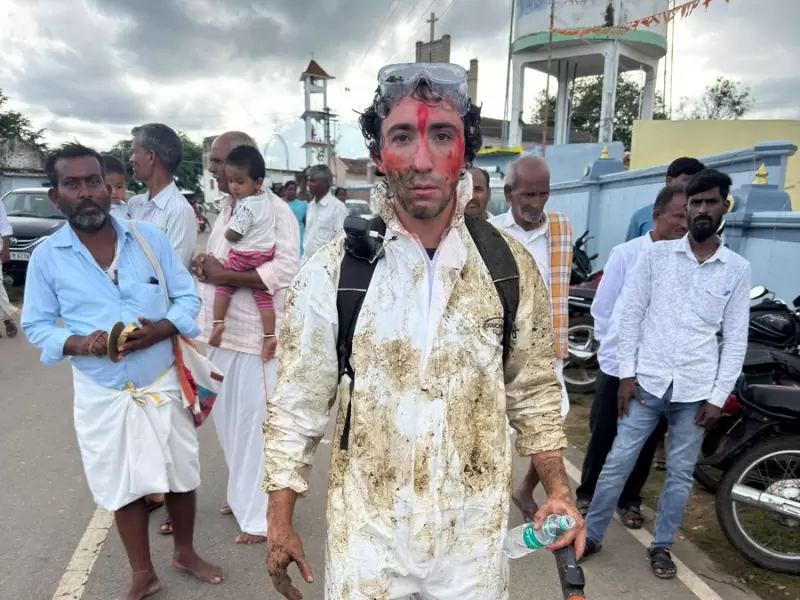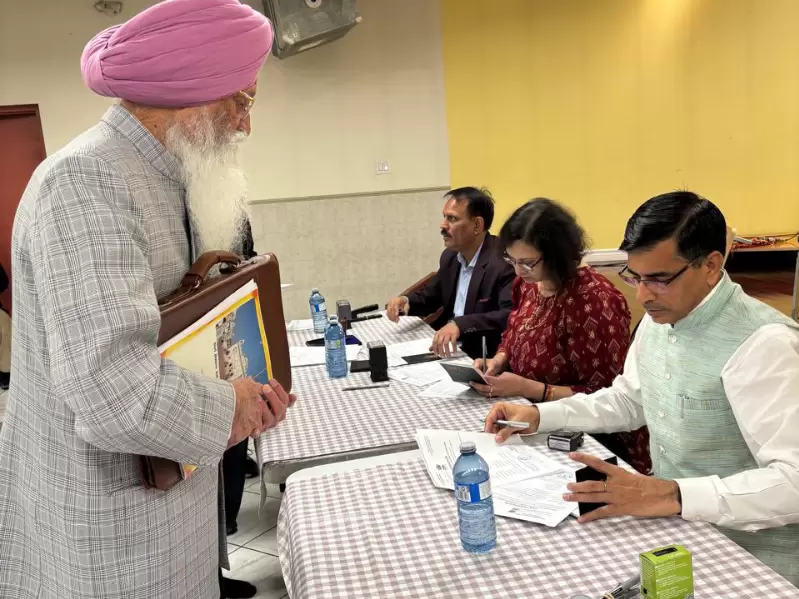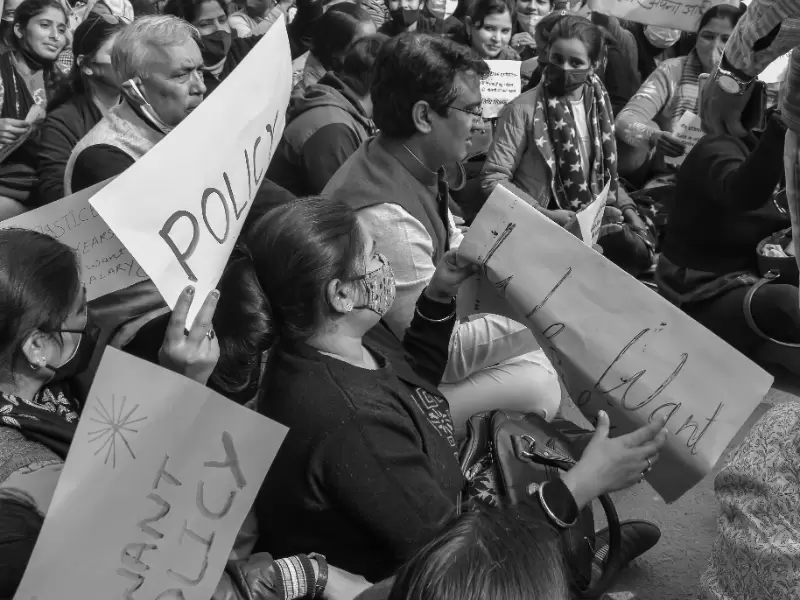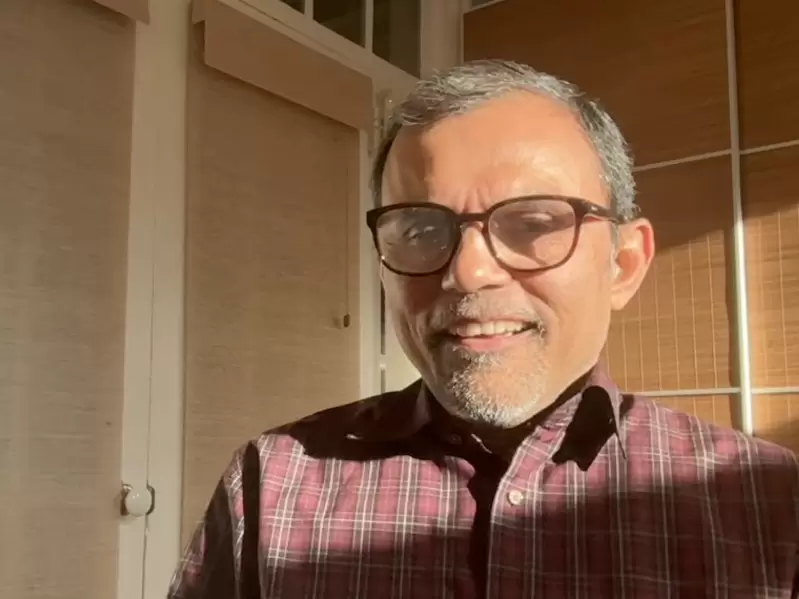Photo Feature: Experience Indian history like never before at the newly launched Red fort Center
The four sections of the center are 'Safar', 'Zindagi', 'Tareekh', and 'Hum Ek Hain'.

The ‘Red Fort Center’, which was recently opened to the public, employs innovative tools like augmented reality photography and a 360-degree immersive viewing experience to give visitors a glimpse of Mughal history, especially the imposing fort- palace from the 17th century, which has something to offer for every history enthusiast.

The center, located between the ‘Chhata Bazaar’ flea market and the ‘Naubat-Khana’ drum house within the fort, is built to house on two floors in a renovated British-era barracks. It was developed by 'Monument Mitra' Dalmia Bharat of the Red Fort in collaboration with the Ministry of Culture, Ministry of Tourism, and Archaeological Survey of India (ASI).


The Red Fort Center is located in a 19th-century British barrack that has been restored in its original form. Visitors can explore and learn about the history of India through the centuries at this transcending center through interactive experiences and unique exhibitions which will be on display at the center. Â


Along with the gift shop and snacks on the main floor, the Red Fort's augmented reality photo room is a favourite among tourists. Here, guests can take pictures next to the Indian flag or the 'Peacock Throne', the jewelled throne constructed by Emperor Shah Jahan. Rare archival photos of the historical landmark are available on the first floor, which is referred to as the ‘Interpretation Center'.


The four sections of the center are 'Safar', 'Zindagi', 'Tareekh', and 'Hum Ek Hain'. While ‘Safar’ provides tourists an overview of Delhi before the establishment of the Red Fort and Shahjahanabad, ‘Zindagi’ gives a glimpse of the majestic architecture, royal customs, and extravagant lifestyle of the fort.

Both ‘Tareekh’ and ‘Hum Ek Hain’ are based on pivotal episodes in Indian history, with the Red Fort serving as both the fulcrum and a symbol of the country's variety and harmony. Anand Bhardwaj, General Manager (Heritage & Events), Dalmia Bharat, claims that the entire barrack has been meticulously conserved using lime rather than cement, just as it was constructed by the British following the 1857 revolt.


A campaign that blended socialist politics with Bollywood flair has carried Zohran Mamdani to New York City’s highest office.
The 34-year-old Democratic Socialist was elected mayor on Nov. 4, becoming the city’s first Indian-American, first Muslim, and youngest leader in more than a century.
Defeating Trump-backed former governor Andrew Cuomo — who ran as an independent — and Republican Curtis Sliwa, Mamdani turned what began as a grassroots movement in Queens into a citywide cultural phenomenon.
Also Read: Democrats sweep first major elections of second Trump term
His campaign, marked by Bollywood-inspired videos, multilingual messaging, and humor rooted in immigrant experience, transformed a local race into a reflection of New York’s changing political identity.
NYC echoes with “Dhoom Machale”
Mamdani ended his victory speech in Brooklyn with the Bollywood song “Dhoom Machale.” The 2004 Hindi film track played as he stepped away from the podium, prompting supporters to dance and wave New York City flags.
Standing beside him were his wife, animator Rama Duwaji, and his parents — filmmaker Mira Nair and scholar Mahmood Mamdani. The mayor-elect thanked campaign volunteers and repeated his key promises: affordable housing, free public buses, universal childcare, and a freeze on rent hikes.
While the song drew the most attention, his speech, in which he referenced India’s first Prime Minister Jawaharlal Nehru, focused on cost-of-living issues and what he called “a city where working people can afford to live.”
Videos of the celebration spread rapidly online. “Zohran Mamdani closes victory speech as mayor of New York to Dhoom Machale. This is like a movie,” one user wrote on X. Another added, “Need footage of Zohran walking around NYC in slow motion to Dhoom background music.”
For many, the moment went beyond celebration — it signaled a shift in how immigrant identity could define American politics’ biggest stage.
Bollywood imagery as campaign language
Mamdani’s campaign made deliberate use of Bollywood’s visual and emotional vocabulary to connect with diverse voters.
His social media videos reworked well-known film moments to explain policy or civic processes. In one reel, he parodied Amitabh Bachchan’s Deewar monologue, changing “Mere paas maa hai” to “Mere paas aap ho” (“I have you”). Another used a Kishore Kumar tune from Karz to describe ranked-choice voting.
The campaign slogan, “Ab, aapka time aagaya” (“Now, your time has come”), was adapted from Gully Boy’s “Apna Time Aayega.” Posters referenced classic Hindi film typography, and events across Queens featured multilingual speeches and popular South Asian music.
According to campaign data, Mamdani’s social media following grew sharply among voters under 35, particularly in South Asian and Latino communities.
Cultural identity and political messaging
Mamdani often connected his South Asian heritage to themes of working-class solidarity and immigrant inclusion. In one video, he discussed Islamophobia while eating biryani and haleem — an image criticized by opponents but described by his team as “an act of normalizing immigrant culture in public life.”
His outreach materials appeared in English, Hindi, Urdu, and Bengali. In parts of Queens, posters read, “Amar mayor, Tomar mayor, Mamdani Mamdani!” (“My mayor, Your mayor, Mamdani Mamdani!”).
Observers said the multilingual strategy helped link cultural identity with civic participation. Political analyst Rina Desai told The Hindu that Mamdani’s campaign “translated progressive politics into local cultural language.”
Mamdani will take office on Jan. 1, 2026, facing an affordability crisis, housing shortages, and public transit challenges. His proposals — including rent freezes, free buses, and expanded childcare — will depend on negotiations with the City Council and state lawmakers.
ADVERTISEMENT
ADVERTISEMENT
E Paper
Video
















Comments
Start the conversation
Become a member of New India Abroad to start commenting.
Sign Up Now
Already have an account? Login